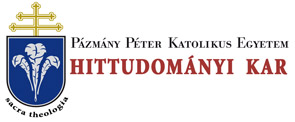Folia Theologica 17. (2006)
Hugh Barbour: Salvare Apparentia
SALVARE APPARENTIA 309 II. Poetic Captatio and Title of the Article I will begin and end with the an appeal to the kalokagathia, the good and the beautiful of the poets, whereby St. Thomas points out one of the introductory articles to his Commentary on the Sentences of Peter Lombard entitled Utrum modus procedendi in divinis sit artificialis, that by the use of poetic language ratio quasi seducatur, "reason is as it were seduced" seduced, that is, to accept the supra-rational truth by the concrete image of the modus artificalis of the bard. Virgil sings in the opening lines of his Georgies: Hinc canere incipiam. Vos o clarissima mundi lumina, labentem caelo quae ducitis annum.... Munera vestra cano... "Hence I begin my song. I sing of your gifts O brighly shining lights of the cosmos, you who guide the circling year from the heavens" Hinc canere incipiam... The title of this talk, "Salvare apparentia: the role of Thomism in the postmodern age" could be fittingly translated into the title of a scholastic article Utrum revolutio copernica et scientia moderna quae eam consequitur obsoletam faciant systemata thomistico-scholastica "Whether the copernican revolution and the modern science which follows from it render the Thomistico-scholastic systems obsolete." III. The Objections The videtur quod sic we are all acquainted with and we could recount its objections from our own study. The objecting reasons follow something like this: The physical science of antiquity was a geocentric system based on the theory of concentrically arranged celestial spheres. The analysis of movement between contraries in corruptible bodies directed by the perfect circular locomotion of the heavenly bodies, leads directly to the ancient doctrine of the four causes, dominated by the causa causalitatis aliarum causarum the final cause. Thus the definition of motion and its scientific resolution in the causes is necessarily based on this account of the universe. The doctrine of nature and its meta
